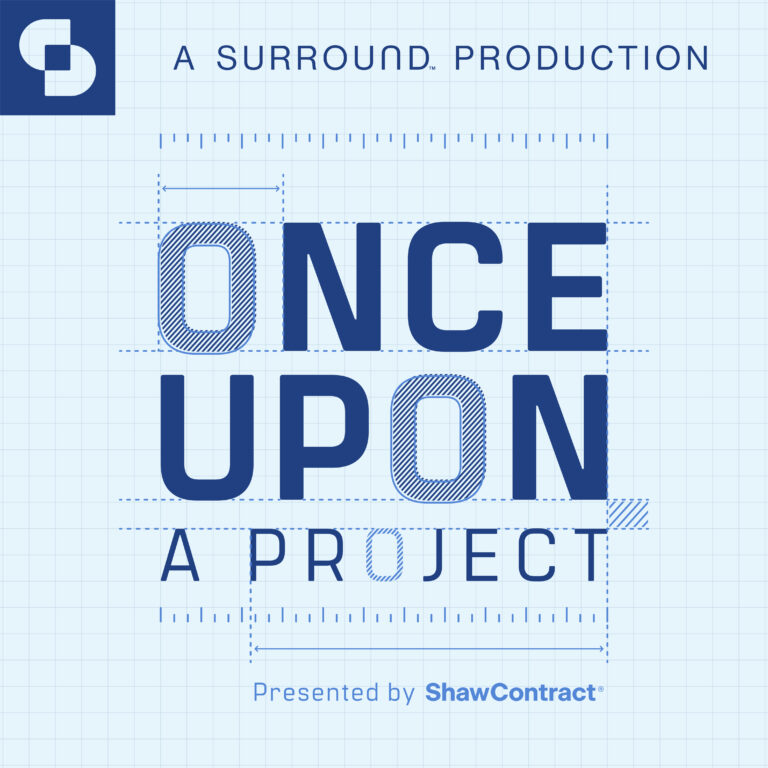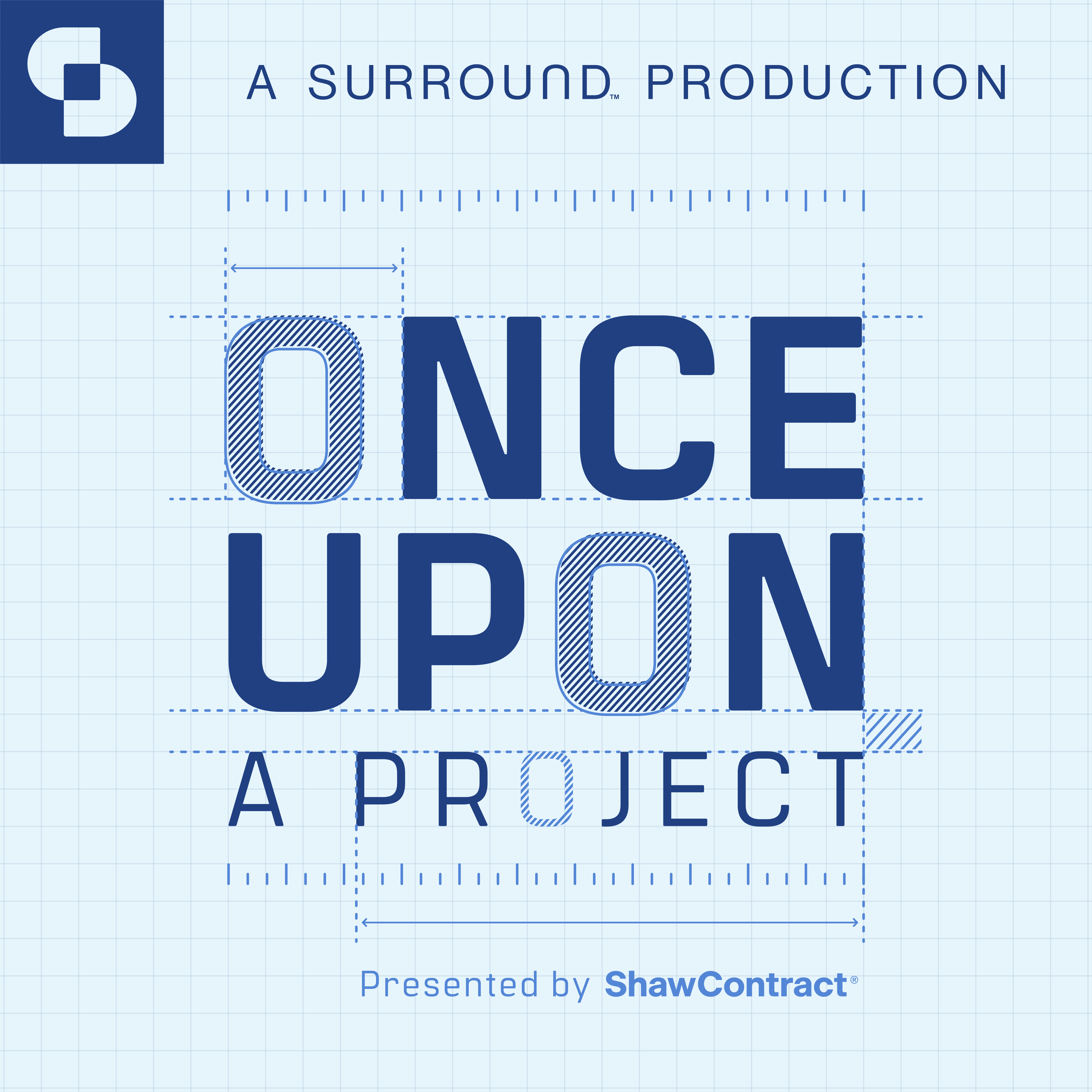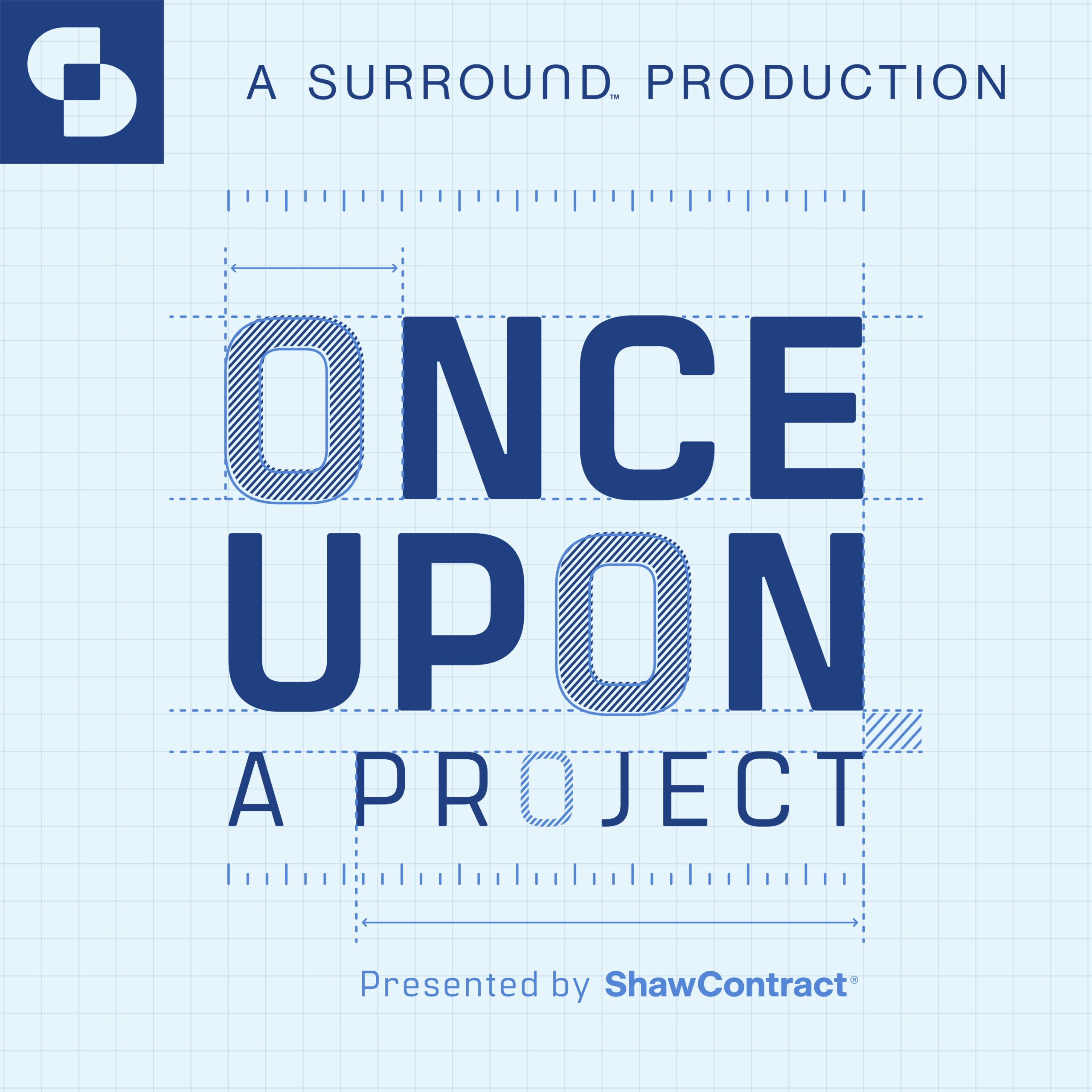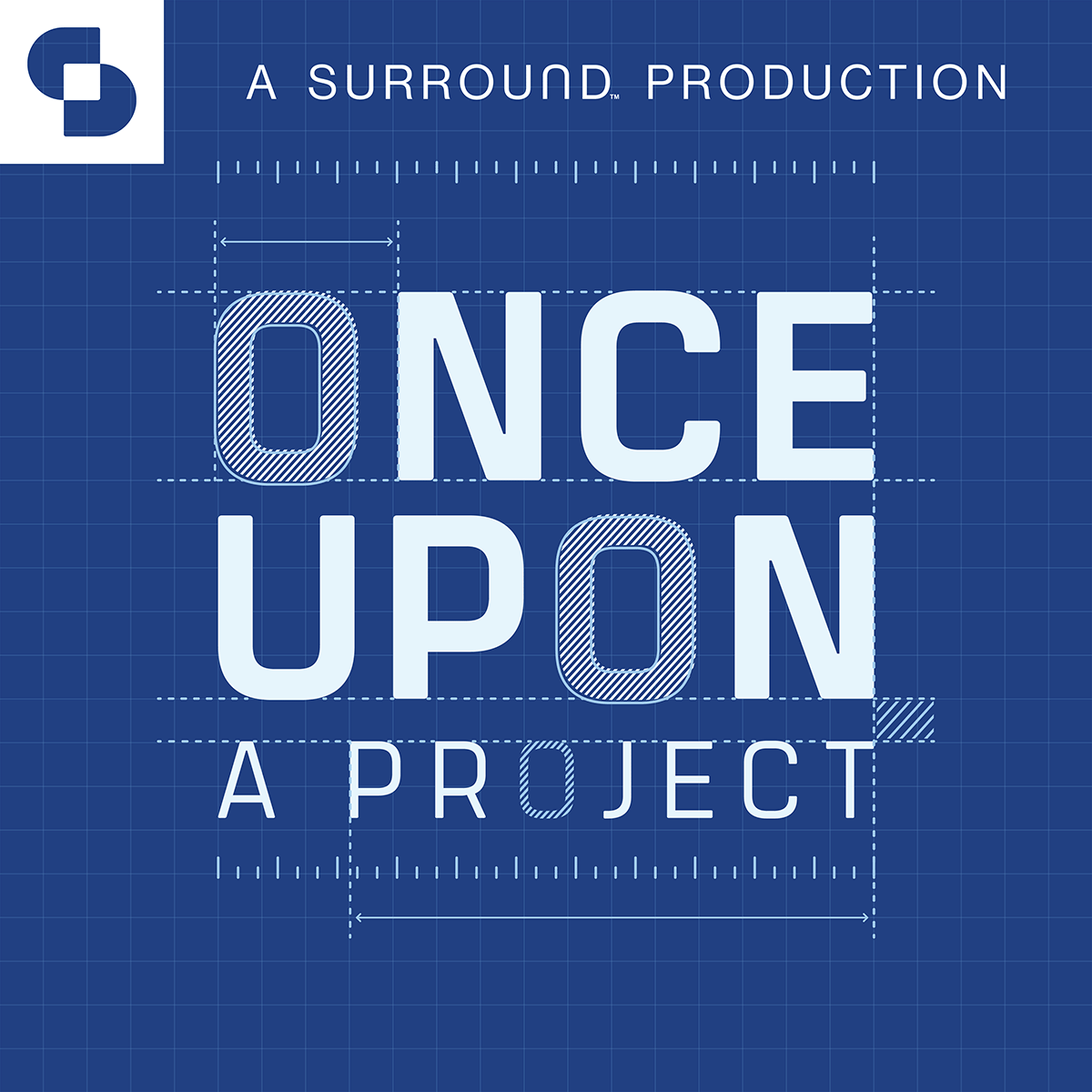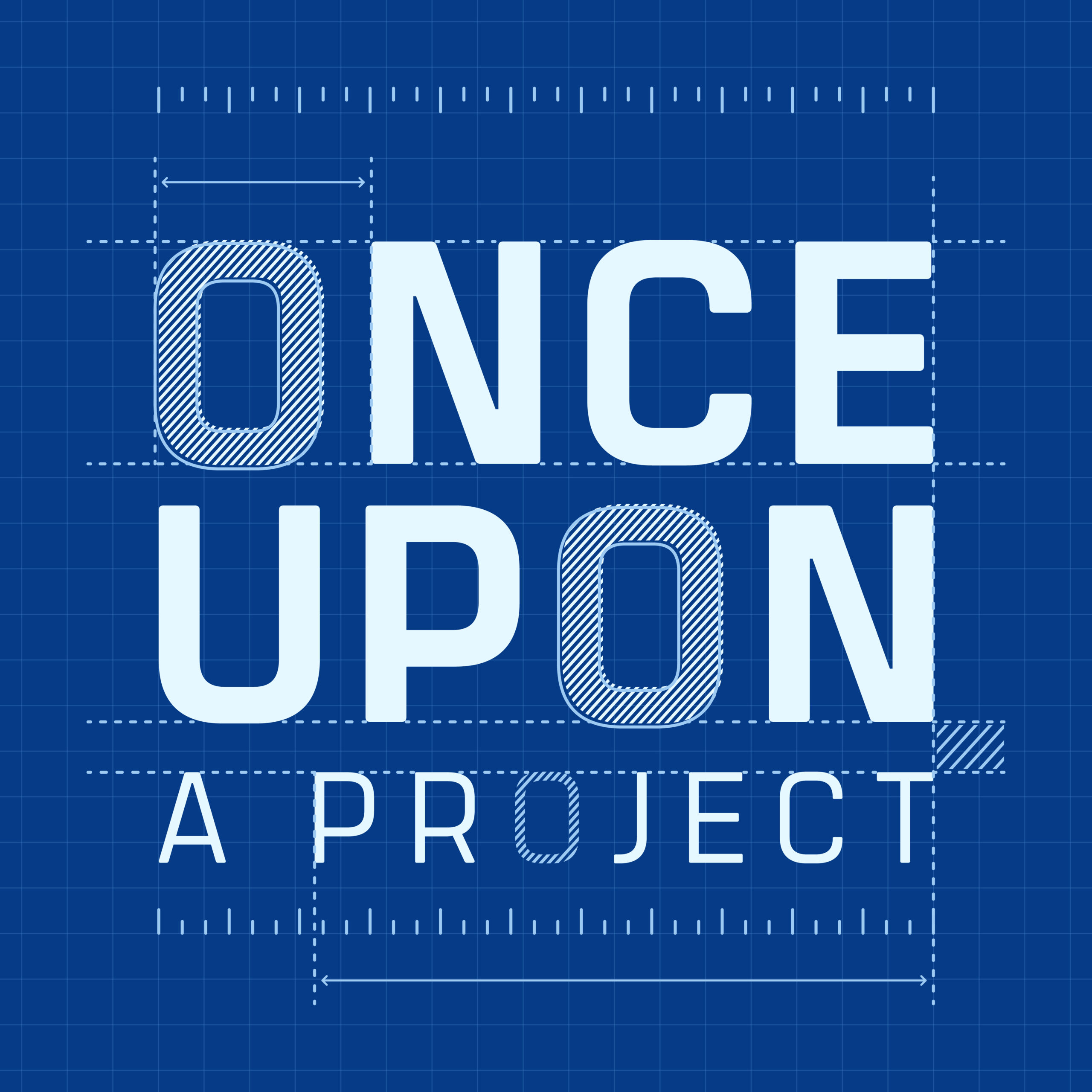Taruan Mabry, former Senior Designer with iCrave, talks about the thrilling opportunity the team was given to work on Scores, an adult entertainment venue in Atlantic City. Listen in as Mabry discusses the unique challenges of designing a high-end strip club—from strange material applications to the moral and ethical question of tackling this kind of project.
Once Upon a Project is a member of the SURROUND podcast network. Check out more architecture and design shows at surroundpodcasts.com.
———————–
See more from iCrave:
Facebook: https://www.facebook.com/icravedesign/
LinkedIn: https://www.linkedin.com/company/icrave-design/
Instagram: icraveny
AJ Paron: [00:00:00] As interior designers, we’re accustomed to celebrating the end of the project. All the final touches in place, installation is complete, and hopefully we have an ecstatic, happy client. But what about the process— the complex journey and people behind the polished and finessed final result?
Welcome to Once Upon a Project, a new show from the SURROUND Podcast Network by SANDOW. [00:00:30]
I’m your host AJ Paron, Design Futurist and Executive Vice President at SANDOW Design Group.
At Once Upon a Project, we typically share stories that cover interior projects that run the gamut of contract design spaces. But every now and then we hear about unusual space or an unusual client. If those stories are intriguing to you, then today is your day.
We will hear from Taruan Mabry on his unique [00:01:00] project he worked on while at iCrave, a very notable hospitality design firm.
One slight warning—this episode has some adult themes. So, if you have kids in the room, you might want to put in your earbuds or listen when they’re not around.
Taruan Mabry: My name is Taruan Mabry, interior designer for 16 years. My focus is hospitality design and yeah, that’s pretty much [00:01:30] my bag.
So, was at iCrave and, you know, iCrave gets kind of out the box projects for sure. They’re pretty known for that.
In the morning we usually have our staff meeting, and they show us our new potential projects that’s coming on the book. And Scores came up. I said, “What Scores?” and he said, “It’s a strip joint.”
AJ Paron: Wait. What? Did he just say [00:02:00] “a strip joint”?
Okay. Let’s rewind for a second.
Taruan Mabry: I said, “What Scores?” and he said, “It’s a strip joint.”
They were like, no, it’s actually a higher end strip joint. They’re coming here to Atlantic City to be in the new Revel Building.
They solicited our firm to take a stab at it. We got the bid for all of the reviews for this adult entertainment review. That’s what they told us to call it, instead of strip joint.
It was exciting. [00:02:30] It was something none of us had done before. None of us.
It was such a big project, too. It wasn’t just like a small venue. It was a big project having multiple pieces.
AJ Paron: Well, this is different. I bet you weren’t expecting that.
So, okay, Taruan and his team get over the shock, and then where do they start?
For designers schooled in the human-centered experience, you would tend to start with the users of the space. But who exactly is that? Is that the customers that spend money [00:03:00] to come into the space, or the staff that works there? And how do you go about finding out their needs?
Taruan Mabry: So, we had to do a survey, which was cool. We did a survey of dancers. Adult performers. We implemented the surveys by giving them questionnaires of: “Do you slip when you have heels on? Do you have an issue with certain types of materials, like velvet?” And things like that. We try to give the span— ‘cause we’re coming from materiality [00:03:30] as well as function—but we don’t know anything about strip clubs or whatever.
We were looking for them to inform how close should seating be when there’s a pole installed? Do you guys need room like a-a five-foot clearance around if you do the tricks and stuff? It was just giving us parameters to see how to do the second iteration of this design.
AJ Paron: For those of you that know design, this would be the programming phase where you find out the user’s needs and wants to make sure you’re creating the right [00:04:00] experience for all.
So, of course, I had to ask Taruan did he go and interview the dancers?
Taruan Mabry: We just came up with questions and submitted it to our client, and then they put it out there for their staff, collected it back, and then sent it to us.
AJ Paron: Hmm. Ok. So, there’s definitely a middleman controlling the process here, and the access to the workers at the facility.
Taruan Mabry: I would’ve preferred us do the questionnaire. [00:04:30] I would do that next time where we speak directly to the dancers versus this third-party kind of thing. ‘Cause they’re just engaging with someone they already know, right, versus asking more than what was on that page. If it were us in the room, we would’ve gone beyond what was on that page and getting more information about what they need. We wanted their true feedback.
And their feedback, they were just giving us colors, leather—what type of leather they like because some can be more slippery than other [00:05:00] when it’s not vinyl. They asked to use specific shiny vinyl, leather, latex in the materiality. They wanted us to focus more on the materiality and how it made the performers feel, versus it just being a pretty thing.
AJ Paron: Hopefully by now this story about this project is starting to sink in, and we will debate the ethics of this project in a minute, I promise. But for now, let’s talk about [00:05:30] the challenges that an entertainment space like this has with materials.
Taruan Mabry: So, we had our first major meeting with them—materials, all the good stuff—and they were like, okay guys, this is great. This looks amazing, but now we have to get practical because this is a place for adult dancing and that type of activity. So, we’re like okay, so enlighten us. What should we be looking at?
They’re like we need more latex, [00:06:00] for sure. We’re thinking it’s because of cleanability, right? Like, uh, of course, but they’re like, no, this is a psychological thing for the dancers, if they want to feel sexy. The dancers respond to latex as a material when they’re up there dancing, or patent leather, something shiny like that.
The second thing was people get on the banquettes and the seating with their shoes on. So, we need a Kevlar underlayer under the seating. [00:06:30] And I’m like Kevlar, like, like police? Kevlar things, like the bulletproof vests?
They’re like, yes, we’ve done it before where we use it as a layer underneath the seating that the heels don’t go through, so we don’t have to keep refreshing the upholstery.
AJ Paron: I’m just gonna let you all know they don’t teach you how to design with Kevlar in design school.
And just like the materials had their own unique twists, so did the overall design of the space.
Taruan Mabry: Considering it was a [00:07:00] strip joint, I wanted to really make it different. Put a spin on it that was interesting.
It was an opportunity to use materiality that we don’t get to use. It gave us the flame, the fire again, to kind of, like, lean into design.
They gave us parameters to come up with spaces, right? So, we can come up with our own rooms.
One of the themes were sex toys. So, we had the cat of nine tales, in black. [00:07:30] So, a cat of nine tales is, um, think of a like a cat woman whip, cut that in the middle, and it’s like a little long, but then there’s nine pieces of that coming from a hand.
We had furry handcuffs. We didn’t do the obvious ones, right? Like none of that stuff, ‘cause it’s not a sex place. It’s more to be sexy. So that’s why we stayed in certain-certain lanes when it came to materials that we wanted to use. But we wanted to inject that playfulness, too. [00:08:00] Like it’s not so serious.
So, we wanted to use feathers. We wanted to use boas, uh, that were kind of woven into the tassel. You know what I mean? Put-put a different spin on these ordinarily cheesy, sexy things. We wanted to elevate the cheesy.
Then we had one was more geared to more S&M, so we would have really dark patent leather, dark tiles, dark glass, kind of that motif in that room. Maybe [00:08:30] two poles in there with a small bar.
We had a gold room, right? So, it’s kind of like pop champagne bottles. It was a lot more dancing in this. There was dancing along the walls.
And one room was a silhouette room where the dancers danced behind glass, and you just see their silhouettes.
It’s not seedy. You’re coming here to spend a lot of money.
Yeah. It was really sexy. It was. We did a lot of research for this.
AJ Paron: Okay. I know what you’re all [00:09:00] envisioning right now. A bunch of macho guys, that are wasted, are going to be the clientele of this venue.
And you probably don’t know that Taruan, being a young Black gay designer, is probably not who the client would have chose to design this space. But you might be thinking wrong. This entertainment space was for everyone.
Taruan Mabry: You know, women can come in there, too, and have a cigar with the thing of whiskey, [00:09:30] and the dancers would just be around at their stations, at their pods.
They actually gave us a male review and we’re like, wait, are you sure? They’re like, yeah, we wanna have all these women come in with their-their bridal shower and all that, so we’re gonna focus on a male review here. And I was like, oh, that means we get to do a questionnaire for male dancers, too.
We went in on this male review. We’re like this is so exciting. Did you ever look at each other screaming, [00:10:00] like, you would never think we would ever do this, right? This is so cool.
We call it the Blue Room. Blue Velvet. That was the name of the male review—Blue Velvet.
Blue velvet tufting was proposed for a lot of the reviews because of the sound absorbency, right. It would just be great for sound with loud music, et cetera. Um, yeah, that was fun.
AJ Paron: Fun is right, which is sometimes rare in the design process. If I had a dollar for every time [00:10:30] I told a person I was an interior designer and their response was, “That sounds like fun,” I would be a very rich woman.
And really, people don’t realize sometimes it’s not fun, or all fun. It’s stressful and, actually often leads to burnout. So, let’s hear Taruan talk about some of the hard work and design thought process that went into this project.
Taruan Mabry: Well, the practicality of it was daunting because [00:11:00] it’s so dark, right? It’s just dark in there. Dark materials, dark spaces. Usually colored light was the way to get around the space. We didn’t wanna use bright light ‘cause it would detract from the mood and the ambiance of it.
So, honestly, one of the challenging things was the practicality of signage. Signage can take away from, you know, we don’t have signage in our homes, right? Or in-in hotel lobbies [00:11:30] or restaurants. We don’t really rely solely on signage to be visible. But in this commercial space, we had to put names of rooms, direction here, arrows and, you know, restroom, ADA compliance is always there. We always have to consider that in design.
So then to be so sexy and free with the—getting the materials together of just the tactile things—the seating, the tables, et cetera—and then have to inject this-[00:12:00] this practical, almost education-like layer into that and still make it look sexy.
AJ Paron: Okay. Let’s talk about the elephant in the room.
Some of you may be thinking is it morally right for Taruan to work on a project like this? And believe it or not, this ethical question comes up pretty frequently for designers.
It may be that they refuse to work on a project for a defense contractor because [00:12:30] they’re a pacifist, or they reject a prison project because their values of social justice are in conflict.
So, what was going through Taruan’s mind when he was asked to work on this project? Did this conflict with his values?
Taruan Mabry: I actually was excited that we took this job.
I didn’t really think about, until it was in front of me, the effect it would have on my psyche. As a designer, my moral compass as [00:13:00] participating in certain things that I don’t agree with, I’ve never really had that thought.
The client and the project was fine. I don’t mind-I didn’t mind working on that and being a part of that. Projects like that, it’s not typical or frequent, so when we get it, and we can get a collection of good design going and good designers on it, it really turns out wonderful.
AJ Paron: So maybe Taruan didn’t have moral discomfort in designing an adult entertainment venue, [00:13:30] but he did have some mental struggles with this job.
Taruan Mabry: And the project really did turn out great. It was just one of the issues that I had with this particular project that was kind of like, how do I be authentic in my design and the consideration for the feedback that we got when I have no connection to this? Which designers sometimes have. You get projects where I’m just not into this thing, but I know I have to do it ‘cause it’s a job.
I was in my mid-thirties [00:14:00] at the time and dealing with a certain level of Imposter Syndrome still. I just hate that Imposter Syndrome thing. I just did it for too long. I was the only Black guy at my firm, been doing design for a while, but others on the team were doing it longer.
And I wish I was actually more vocal than I was, but I kind of just fell back. The client was dudes, and they were just bros. I mean, they were. [00:14:30] They were just older bros. I just didn’t know how to communicate that way, right? To kind of land the whole thing.
It’s always been a challenge for me to-I-It was a consideration thinking it was a adult entertainment venue review.
That hyper-masculinity would intimidate me. They were nice guys, y’know. They were just being guys, right? That just like going to strip joints and opening strip joints, and it was hard to engage [00:15:00] them sometimes in the material way, just materials in a box.
They’re not really interested in that part, but they tried; they did their best. I didn’t feel like it was worthless. That this is an important factor of the design. So, I had to, kind of, get out of my head a lot to fit in, right, and not feel like I’m sweating and being all nervous around them. And then to get to this place where, oh, it felt like [00:15:30] I was disappointing myself almost like, “Oh, you still feel this? It’s like, oh, I thought I outgrew it a little bit.”
AJ Paron: Honestly, I think all good designers can suffer from Imposter Syndrome. It takes some time in your career to come to the conclusion you are good enough.
And guess what? Imposter Syndrome is not exclusive to designers. Some of the most successful people I know have felt this way in their life. So, I bet most of you can empathize [00:16:00] with Taruan feeling intimidated by this client.
Taruan Mabry: It was ridiculous now that I think about it, but it was a moment that now I can reflect and see I could have been more vocal about where I’m coming from, and not come from this sexist position that we were kind of funneled into going into just because of the client being the client. That’s who they were.
AJ Paron: Now most designers are trained to be human-centered in their approach [00:16:30] to design, meaning you really strive to understand the needs of the users, and I tend to call that design empathy. So, how did Taruan think about what the dancers needed out of this unique work environment?
Taruan Mabry: I also had to think, while I was working on Scores that, women dancing on a stage is not anything but entertainment, right? I would say, first and foremost, I want to [00:17:00] legitimize that this is a career for people, right? Which is just women making money in full confidence. It’s not a bad thing.
And by the way, they love what they do. And they’ve been doing it for years, and it’s like it makes me think differently now how to design that more toward just the dancers being a prop.
Something that was important for me was to be clear that [00:17:30] their input— the people that work here—the dancers that work here that are being empowered and taking the narrative and showing and expressing what makes them feel good.
They deserve to have high-end design.
This place, specifically, it was an opportunity that we, as designers, we’re gonna make this special for them—not even really thinking solely about the patrons—but I want them to feel awesome going to work and getting dressed [00:18:00] every day.
AJ Paron: He does have a point. Everyone deserves good design.
In discovering the safety challenges and stigma these entertainers face every day, could a design decision make them feel more safe and secure, or feel more confident?
Some people might say, “This venue’s going to be built one way or another, so my job is to make sure it’s the best for the dancers that it could be.” I mean, maybe, [00:18:30] it’s definitely something to make you think about.
So, after going through the emotional rollercoaster Taruan had throughout this job, I asked him if he’d do this project again.
Taruan Mabry: I would take a client like this again because I think, culturally, we’re more conscious of women and how things make them feel, and not just throw flippant comments out there.
AJ Paron: Well, there’s your answer. [00:19:00]
Now, it’s okay if you don’t agree. I know plenty of people that wouldn’t take a project like this for moral or ethical reasons. You may wonder for Taruan, when he looks back at this work, did he accomplish the design he intended?
Taruan Mabry: What exceeded for me for the project was once everything was put in, and it was up and running, it felt like a movie. It felt like a movie set. That’s how everything worked together. [00:19:30] It was a really successful project, I will say that.
AJ Paron: Even though the project was a success in Taruan’s mind, the adult venue did end up closing after having a strong run at entertaining customers for many years. So, if you’re looking to check it out, you will have to use your imagination.
Whether you agree with the ethics of doing a project like a strip club, or not, it’s a good conversation for us to have [00:20:00] because this won’t be the last controversial project that gets put in front of a designer as an opportunity.
I had a design friend that did not take a residential project because the client was from Enron. Yes. That Enron. The one that had the big, huge financial scandal, and she felt bad about getting paid from money that was ill got.
Another designer I know refused to work on a corporate [00:20:30] redesign for a defense contractor because she was against the war that they were making weapons for.
So how do we, as the design community, figure out where the line actually is? I think the answer is there’s really not an answer. It’s up to each person or design team to make that decision.
To hear more stories about [00:21:00] the design process behind some of the most amazing projects with some really cool designers, make sure you follow us wherever you get your podcasts.
Once Upon a Project is part of SURROUND, a podcast network by SANDOW. To check out our other design-related show in our network, head over to surroundpodcast.com.
A huge thank you to Vornado for letting us use their amazing podcast studio in the brand new PENN 1 building in Manhattan.
[00:21:30] This show is produced by SANDOW Design Group. Huge thank you to the pod squad that makes me sound amazing—Samantha Sager, Hannah Viti, and Wize Grazette.

